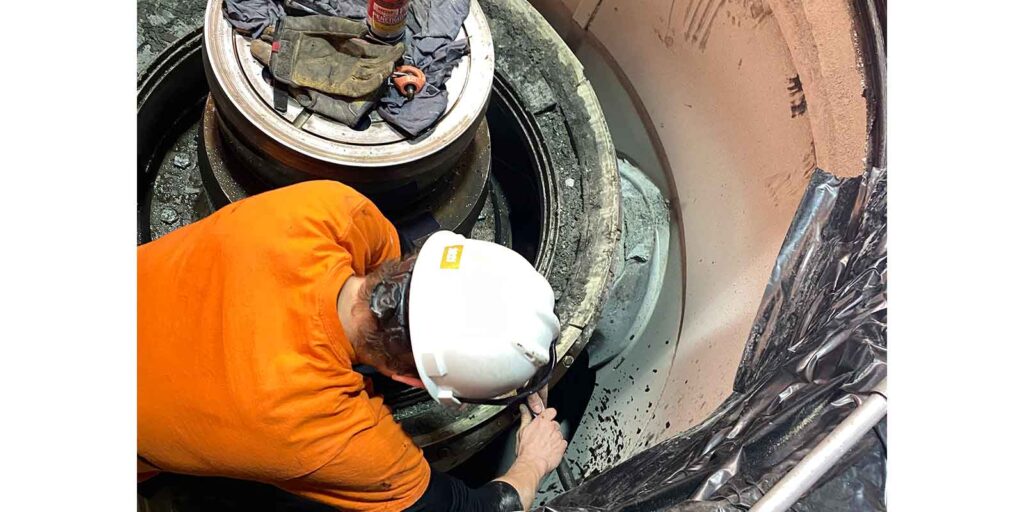Wear and tear are inevitable for all aggregate machinery, especially rock crushers. The large amounts of pressure and friction needed for rock crushing can grind down and damage even the best equipment over time.
Spotting and stopping wear can include several significant benefits, such as:
- Increased component lifespans:As components avoid wear accumulation, they will last longer.
- Reduced maintenance time and costs:With less wear, less maintenance is required, saving time and money.
- Reduced downtime and increased productivity: As less maintenance time is required (and components are replaced less frequently), crushing plants can spend more time on the job.
So, before the heat of summer arrives bringing the prime of crushing season with it, it’s essential to ensure that your crushing equipment is ready to go – that you know how to check for wear. The number one action you can take to mitigate wear and tear is preventative maintenance.
With that in mind, here are five preventative maintenance steps you can take to protect your necessary components from damage and to keep your systems optimized.
1. Check your components daily.
This can seem like overkill, but we can’t recommend it enough. Sending a reliable technician to check components regularly is crucial to keeping your plant or operation moving full steam ahead. Damage to parts can be mitigated if you are on top of maintenance. This daily maintenance can also be more cost-effective because you’ll be able to identify smaller less expensive parts that need to be replaced before the damage there affects the more expensive parts of your crusher.
For example, if during your inspections you notice that a mainframe liner is wearing down and replace it. This may cost you around $2000, but it’s significantly less expensive than completely replacing the mainframe because you didn’t notice the wear on the line. (A full mainframe replacement can cost up to $100,000.)
Trust us, taking the time to stay on top of maintenance is worth it.
When checking your crusher parts, always remember to check by specific section so you don’t miss anything. Check for different types of wear like holes, bending, misalignment, worn spots, and washout. Also, be sure to measure how fast certain parts are wearing out.
2. Follow manufacturer specifications.
These spec sheets and manuals are written for a reason. They will guide you in your crusher preventative maintenance and help you spot wear signs sooner. Each machine’s specifications should detail how to examine, handle, ad replace each part.
They can also help you know how to get the most out of the many components of your rock crusher.
3. Be aware of common wear signs and areas.
Where does wear happen on a crusher?
Unfortunately, wear can appear anywhere on the crusher that comes into significant contact with the rock you’re crushing.
This can include various components like…
Check out our supply of manganese liners here!
That’s a lot of components to check, and that’s why we recommend the daily checks above. There is a way to get a little more efficient with your inspections. Pay attention to high interchange points and known weaknesses in your crusher. Over time, you’ll build a rapport with your machine, and you might even be able to accurately predict down to the week when a certain part will wear out.
4. Know your crusher’s design limitations.
Continuing in the vein of getting to know your crusher, make sure you understand its limitations during operation. Parts will wear less and last longer if everything is operating at proper capacity. Parts will wear less and last longer if everything is operating at proper capacity.
Check out your volumetric limit, horsepower limit, and crushing force limit.
An “ideal” operational condition would exist when the crusher is operating at its volumetric limit while still being slightly below both the horsepower and crushing force limits.
Operating outside these limits can cause overload and significant, expensive part damage.
5. Invest in high-quality parts.
Last but not least, consider investing in high-quality, long-lasting parts for your crusher. No two job sites are the same. You need parts that can scale and maintain effectiveness in whatever application they are in. To prevent constant replacement, find a reliable and fast crusher parts supplier that can meet your specific needs. Cut down on wear and improve uptime on your site with superior parts.
Check out our e-commerce site here to get your crusher up and running again.
Get the assistance you need for a successful summer.
If you aren’t sure what parts you need, no worries – we can help.
Get in touch with us, and our team will consult with you to determine your requirements. We’ll ask questions (and identify the parts that will best serve your needs. If you need help implementing your new parts, we can send technicians to your site to assist with that, too.
Here’s a quick video of a bird’s eye view of our Mellott Campus!
The bottom line is that no matter your needs, we can help you identify, obtain, and implement the ideal components for your rock crushing application.
At Mellott, we’ve been helping the aggregate industry meet its crushing needs for over 50 years. We have a depth and breadth of expertise that’s unmatched in the industry.
If you’re looking for parts, give us a call today to get started.

